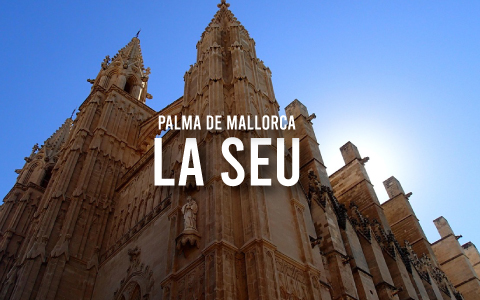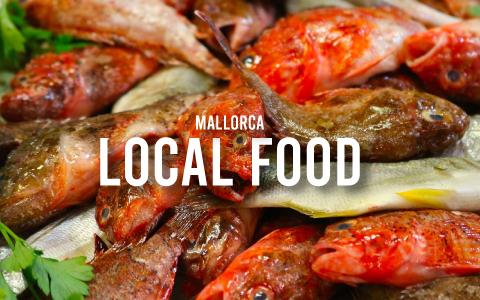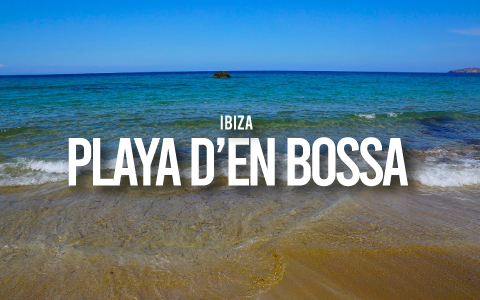
La Seu in Palma de Mallorca: The Incredible Cathedral by the Sea
In the historic heart of Palma de Mallorca, right by the sea, stands the majestic La Seu, the Gothic cathedral that dominates the city’s skyline. With its golden facade, enormous rose window, and prime position overlooking the bay, La Seu is a place that captivates anyone seeking the island’s most authentic beauty.
The History of La Seu, Palma de Mallorca Cathedral
The story of La Seu dates back to 1229, the year King James I of Aragon conquered Mallorca, liberating it from Muslim rule. As a sign of divine gratitude, he decided to build a grand cathedral on the remains of the ancient mosque. Construction lasted over three centuries, with the cathedral finally completed in 1601. The result is a marvel of Catalan Gothic architecture, unique in its size and location: it faces directly onto the sea, as if to bless the Mediterranean waves.
From the outside, the basilica impresses with its height and its large central rose window, one of the largest of the Gothic period. The interior, with its tall, slender naves, conveys a sense of lightness and spaciousness. Light filters through 61 stained-glass windows, creating plays of color that shift throughout the day, lending a mystical and evocative atmosphere.
Finally, one cannot help but mention the cathedral’s peculiar location, perched on a slight promontory overlooking the sea. The view from the churchyard is truly striking: the blue of the bay, the palm trees, the silhouette of sailboats on the horizon. A postcard-perfect scene that transforms into pure emotion.
La Seu and Gaudí
Among the most celebrated interventions in the cathedral’s recent history is that of Antoni Gaudí, who, between 1904 and 1915, was commissioned to renovate the liturgical spaces. His touch is evident in the reorganization of the altar, the majestic hanging baldachin, and the addition of lamps and furnishings that blend Gothic aesthetics with modern functionality. While some of his proposals were never realized, Gaudí’s contribution left a recognizable imprint.
The Gardens of La Seu
Just behind the cathedral, hidden like a small secret, lies the Jardí del Bisbe (Bishop’s Garden). This delightful botanical garden, framed by stone walls and orderly pathways, is one of the most peaceful spots in Palma de Mallorca’s historic center. Inside, fruit trees, native flowers, a small pond, and shaded benches coexist harmoniously.
The garden reflects the style of the courtyards found in stately Mallorcan homes, where nature and architecture elegantly merge. A stroll here, away from the tourist bustle, with the sound of birdsong as a soundtrack, brings a sense of calm and well-being.
The Most Interesting Events at Palma Cathedral
The Cathedral is a significant landmark for the community of Palma and plays a central role in daily life. For this reason, locals hold events related to La Seu very dear, particularly the Canto de la Sibila and the Fiesta de la Luz.
The Canto de la Sibila
Among the most intense experiences at La Seu is the Canto de la Sibila, held every year on December 24th, during the Midnight Mass on Christmas Eve. This medieval liturgical chant announces the end of the world and the Last Judgment and is performed by a young person dressed in a tunic, accompanied by a choir of children’s voices.
The origins of the chant date back to the 12th century, and in 2010, it was recognized by UNESCO as an Intangible Cultural Heritage of Humanity. Moving, profound, and steeped in mystery, this ritual transforms the cathedral into a place of pure spirituality.
The Fiesta de la Luz
Twice a year – on February 2nd (Candlemas) and November 11th (Saint Martin’s Day) – La Seu hosts a spectacle called the Fiesta de la Luz. Only on these two days of the year does the sunlight create a stunning phenomenon, passing through the eastern rose window and reflecting perfectly below the large opposite rose window, thus forming a perfect figure eight of colored lights that seems suspended in mid-air: it’s the Vuit de la Seu, or, in Castilian, the Ocho del Luz, the eight of light. This phenomenon, a result of the basilica’s engineering and architecture, attracts hundreds of visitors each year who gather in a moment of collective silence and wonder.
Useful Information for Visiting La Seu
La Seu is located in Plaça de la Seu, in the historic center of Palma de Mallorca.
- Opening Hours:
- November to April: Monday–Friday 10:00 am – 3:15 pm
- May to October: Monday–Friday 10:00 am – 5:15 pm; Saturday: 10:00 am – 2:15 pm
- Sunday: Closed for tourism, open only for mass
- During public holidays, open from 10:00 am to 2:15 pm:
- March 1st – Balearic Islands Day
- May 1st – Labor Day
- June 24th – San Juan
- October 12th – Hispanic Day
- March 1st – Balearic Islands Day
- November to April: Monday–Friday 10:00 am – 3:15 pm
- Ticket Prices:
- Cathedral entrance: Free
- Cathedral + Museum of Sacred Art: 10 €
- Cathedral + Panoramic Terraces + Museum of Sacred Art: 25 €
- Museum of Sacred Art: 5 €
- Cathedral entrance: Free
You can purchase tickets on the official website to avoid queues, especially during high season.
What to See Nearby
Once you’ve left the cathedral, the temptation is to linger nearby: Palma’s historic district is a treasure trove of surprises.
- La Almudaina Palace: right next to La Seu is this royal residence, still in use, a blend of Gothic and Arab influences, with charming courtyards and sea-facing terraces.
- S’Hort del Rei: Once the private garden of the kings of Mallorca, today it’s a public green space with fountains, pergolas, and sculptures;
- Esbaluard Museu: a ten-minute walk from the Basilica, in the bastión de Sant Pere, you’ll find this modern contemporary art museum. It houses works by Miró, Picasso, and Balearic artists and features a splendid sea-view terrace. It’s open daily from 10:00 am to 8:00 pm (Sunday closing at 3:00 pm). The entrance ticket costs 6 €;
- La Lonja district: a short distance away, this elegant neighborhood is the realm of gourmet tapas, art galleries, and chic venues. It’s perfect for ending the day with an aperitif;
- Bellver Castle: if you fancy a short excursion, climb up to this circular castle (one of the very few in Europe!) nestled among the pines. From up there, Palma stretches out at your feet, including the sea;
- Arab Baths: this is a small hidden gem in the maze of old city streets. These are the remains of a 10th-century Moorish hammam, surrounded by an inner garden.



